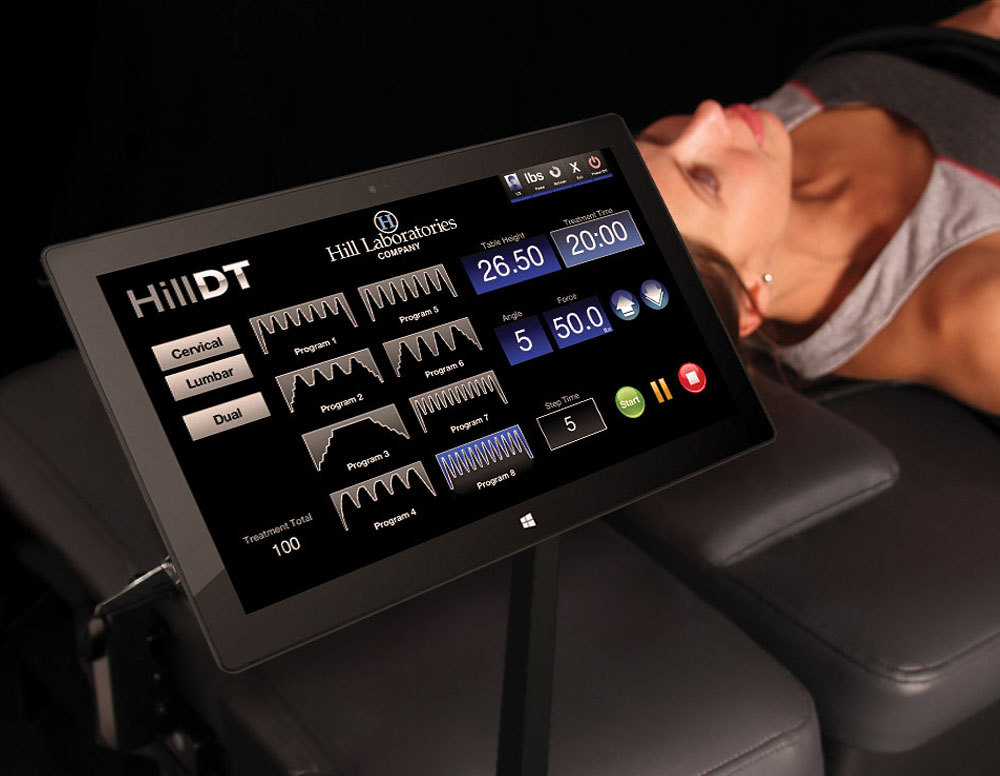HillDT Decompression Therapy

What is Spinal Decompression?
Non-Surgical Spinal Decompression is a non-invasive treatment for patients who suffer from neck and back problems. A decompression treatment slowly and gently lengthens or releases pressure in the spine through repetitive movements by a customized medical device. The table pulls and releases, creating a pressure change within the invertebral disc, surrounding soft tissue, and joints. This pressure change allows the disc bulges or herniations and nutrients to be pulled back into the disc. Rehydration of the disc and surrounding tissues creates a physiological change which assists the body’s natural healing process.
How long will my results last?
Each patient is unique and results vary. However, research suggests that continued improvement is seen up to four years following the decompression treatment program.
How Spinal Decompression Works
Through the stretch and release protocols of the decompression procedure, negative pressure is created in the disc over time. This vacuum effect draws any herniated disc material back into the disc. By relieving pressure in the spine, increased circulation also occurs in the disc which is a vital aid in the healing process.
The Five Components of Treatment:
1. Pre-decompression Treatment or Therapy
Pre-treatment may include laser, acoustic compression therapy, electric stimulation, hot packs to pre-condition regions to be decompressed
2. Hill DT Decompression Table Protocol
Treatment with a specific programmed protocol unique to the patient’s condition to create a phasic physiological change
3. Manual Treatment or Manipulation
Manual spinal adjustment or instrument adjusting techniques to correct mechanical and structural dysfunction
4. Nutritional Recommendations
Diet counseling and nutritional supplements to support restoration of the disc and decrease inflammation
5. Posture Rehab & Core Strengthening
At home therapeutic exercise or other additional neuromuscular rehab to assist in the healing and repair
Five Reasons To Consider Non-Surgical Spinal Decompression:
- Bulging or herniated discs
- Degenerative disc disease
- Facet syndrome
- Failed back surgery
- Ongoing lower back or neck pain that is not responding to traditional spinal treatment by a D., D.O., D.C., or P.T.
The HillDT Difference
The Hill DT table is unique in comparison to other treatment tables. But it’s more than a table, it’s a comprehensive program. The sensors in the table con- tinually monitor the patient to ensure proper treatment is delivered. Nutrients and oxygen-rich blood are drawn back into the disc. Since these areas of the spine receive low circulation, this is a critical component of decompression.

